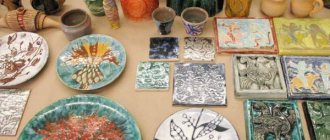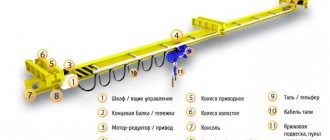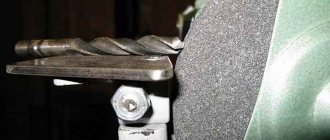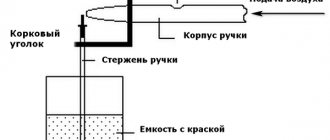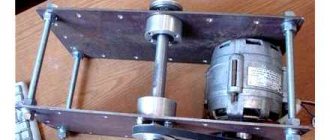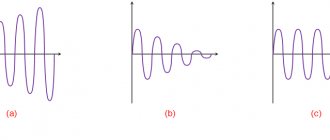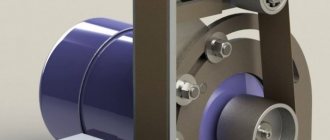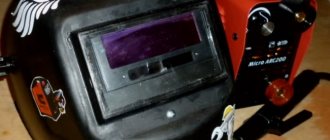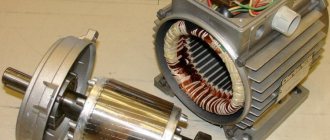Sooner or later, a novice beekeeper is faced with the question: “What is better - foundation bought in a store, or made with your own hands, at home?” This is a really important question. The economic benefit, the speed of starting as a beekeeper, and the level of professionalism that you are going to achieve by doing this business will depend on the decision made.
Let's take a closer look at the recommendations for choosing foundation when purchasing and the process of making it. For those who plan to make their own, we will review the tools, equipment, and production technology at home.
Recommendations for selection
Let's consider a few primary recommendations for choosing foundation.
By following them, you will protect yourself 99 percent from purchasing low-quality material:
- First, you need to examine the appearance of the foundation. The sheet must not have dents, damage, holes, holes;
- A quality product has a yellow, light yellow color;
- Assess the cleanliness of the canvas. Hold it up to the light. The sheet must be transparent, otherwise it will be fragile due to a violation of the production technology (during production the composition contained foamed water);
- The next step is to measure the size of the cells. Take a ruler and measure the distance between the parallel sides of the hexagon. For a more accurate result, we measure several cells in three directions. A high-quality product has a cell size from 5.3 to 5.45 mm. There are exceptions. When manufactured to order, sizes 5.65 mm, 5.85 mm are available.
- Do an experiment. At room temperature, place the sheet across your palm. A quality product will bend slightly under its own weight, but will retain its shape. If the sheet sags like paper, refrain from purchasing it.
Extract from GOST:
Profitability of the foundation production business
If you approach business organization wisely, all expenses can be justified in the shortest possible time. And the most important thing here is to quickly find regular customers. It is at this stage that many beginning entrepreneurs face the main difficulties. Surely, local apiaries are already cooperating with someone, which means they will have to either lower prices for finished products or look for consumers in other regions.
To calculate profits, you first need to estimate the main investment in the business. To buy a press for the production of foundation and other equipment, prepare the premises for work and stock up on raw materials, you will need at least 1,300,000 rubles. And this is in the case of equipping the workshop with medium-power equipment. The initial investment will be reduced to RUB 800,000 if you purchase used equipment.
More to read:
Do-it-yourself wicker furniture from artificial rattan as a way to earn money.
Production of wax candles - we will realize the dream of having our own candle factory.
How to create a fast-paying business with minimal investment?
To show how profitable this niche is, let’s take as an example a foundation press with a capacity of 50 kg/h.
The initial data is as follows:
- Shift – 8 hours.
- Shifts per month – 30.
It turns out that up to 12 tons of finished product can be produced monthly. And if you sell all the products received at an average wholesale price of 350 rubles/kg, the company’s revenue will be more than 4,000,000 rubles. Part of this amount will go to further production - the purchase of raw materials, rent, salaries for employees, taxes, transport, communications. If the equipment operates uninterruptedly and goods are fully shipped from warehouses, the net profit can be 150,000 rubles per month.
And despite the fact that the price of a machine for making foundation with your own hands, and accordingly the total costs of starting a business, may be different, by establishing the production of high-quality products, finding customers and organizing the delivery of ordered products to them, you can reach the break-even point within six months, starting to earn high profits.
Manufacturing options
Today, wax is a popular product. It is produced by enterprises, small organizations, craftsmen at home, and workshops.
Equipment and manufacturing options are selected based on the purposes of production (sale, provision of a personal apiary), planned volumes of production and the location where this production will be located (workshop, garage, barn, kitchen of your own house, apartment).
House
Most large beekeepers prefer to make foundation themselves, providing themselves with fresh material and stockpiling stock. If you have several dozen or hundreds of hives, it is quite expensive to buy a large batch. The risk of introducing an infection to the apiary using “foreign” foundation is also great.
The entire production process consists of 3 stages:
- Sterilization (the sterilization apparatus is a two-jacket container with a heating element. The first jacket is filled with oil, the second is used for heating wax briquettes);
- Making blanks - there are two methods: lowering the pattern into melted wax with further rolling; using a press;
- Rolling - applying a honeycomb relief to the surface of the workpiece (used when using the lowering method).
The whole procedure is quite simple. Experience plus dexterity can provide the beekeeper with the right amount of fresh foundation, make the necessary supply, save money, and prevent infections from entering the apiary.
The equipment, without technically complex components, can be manufactured independently (sterilizer, patterns).
Shop
If you want to engage in foundation production as a business (to make a profit), it will be easy to find and buy equipment. The market is filled with a huge number of offers. From manual, semi-automatic, compact machines suitable for convenient placement in a garage or workshop, to automatic production lines capable of handling any volume (you will need a room of appropriate size).
The principle of operation is not much different from artisanal production:
- Wax sterilization;
- Forming wax tape (blanks);
- Rolling of blanks (application of honeycombs).
Foundation production technology
- Melting the wax. As a rule, only high-quality bee wax is used, but to reduce the cost of the product, about 15% of industrial wax can be added.
- The resulting raw material is settled and filtered.
- Formation of sheets using special equipment. A wax production machine with rotating drums is used. During the formation process, the sheets are cooled with water.
- Pressing sheets to a thickness of about 1 mm.
- Applying an impression using matrices.
- Cutting the finished product into sheets of the required size.
- Drying and packaging of foundation.
Making wax with your own hands
For those who have decided to produce foundation themselves, let's look at the necessary materials, equipment, and analyze the entire technological process in detail.
The first thing you need to do (beginner beekeepers) is buy wax. It is enough to contact a specialized supplier (store, wholesaler) familiar to experienced beekeepers. If you don’t have such acquaintances, you can definitely find them on the Internet. Any social network contains a huge number of groups and communities of beekeepers, where you can ask a question, get advice, ask for help, buy the necessary tools and materials.
Tools and equipment
Basic equipment required:
- Sterilizer is a container in production used for sterilization (disinfection) of wax. Schematically - a container in a container, between which oil is poured (most often machine oil, waste oil is used). The inner tank is furnace wax. The heating elements heat the oil, melting the wax. The heated material is kept for several hours (2-3 hours).
- A container that keeps the wax melted - similar to a sterilizer in design and operating principle, but smaller in size. Instead of oil, use water.
- Engraving rollers are a mechanism for applying honeycombs to the surface of a workpiece. If you use all kinds of soft dies, smooth rollers are suitable.
In addition to equipment, you will need a number of auxiliary tools:
- Knife (most often they use a disk knife, the so-called “pizza knife”). It is necessary when cutting off excess workpiece and giving it the correct shape. It is possible to use any other, the main thing is its sharpness, convenience, and safety.
- A device for straining wax before making blanks. They use different objects, including a little imagination. The simplest option is women's stockings. Specialized equipment will require costs.
- Pattern for the production of foundation blanks. You can use smooth plywood cut to a specific size. It is made a little larger (3-4 cm) than the size of the required sheet (it is convenient to process the edges).
- A pattern of the exact size of the desired canvas. It is also made from plywood. The finished (rolled) foundation is cut along it.
- Container with water. A simple, necessary item in the process. Helps increase production speed (workpiece cooling). Anything that can accommodate a pattern (bucket, basin) will do.
Preparation
- Place wax briquettes in an oil sterilizer, heat it to a temperature of 120-140 degrees Celsius. Wax briquettes contain a certain amount of water; when it reaches 100 degrees Celsius, the composition will begin to boil; as it evaporates, the process will decrease until it stops completely. The surface will become smooth and the temperature will rise. It is necessary to maintain the temperature for 2-3 hours. This stage should be treated with special care and due attention. Even if the wax was purchased from a trusted supplier or acquaintances, this does not guarantee the absence of all kinds of bee pathogens. High-quality sterilization is the key to the health of the future apiary (for beginning beekeepers), or existing bee colonies.
- Next, after straining, pour it into a container where it will be maintained in a liquid state.
- Take a template of the blanks, dip it into wax several times until a layer forms on the surface (2-3 times is enough, the exact amount will be determined with experience and practice).
- Place the plywood in the water and wait.
- Clean the edges and remove the resulting sheets of wax.
- This process will allow you to make blanks for future foundation. The procedure does not seem complicated, but it will require patience, accuracy, and experience. The more you try, the faster understanding, steadiness of hand, dexterity will come.
Pressing
This method of producing foundation involves the use of a specialized press. The stores are filled with a wide variety: handmade; automatic; semi-automatic; with cooling. All types are united by the principle of operation. The surface of the matrix (fixed in them) is filled with melted wax, during squeezing, the finished product is formed.
Although the method differs from the one described above, the need to use sterilization and straining remains. The advantage of this method is the ability to set up production right at home. The devices are compact and can easily fit on the kitchen table. The downside is low performance.
Rolling
Engraved rollers are used to apply honeycomb onto the smooth surface of the workpiece. It is possible to use a flexible matrix with smooth rollers. The tool can be manual or electric. Electric ones are suitable for novice entrepreneurs; in their household, devices with a handle will do just fine.
It is necessary to monitor the passage of the workpiece between the shafts. The end of the blade must be strictly parallel to the shafts. The correct location of the cell pattern will depend on this and will help avoid incorrect formation of honeycombs by bees.
Bees need cells for quick, efficient construction of honeycombs, as well as for producing strong, healthy offspring. Their depth and size should be as similar as possible to natural honeycomb cells.
Basic equipment
To organize a small foundation manufacturing business, you will need several special machines. The minimum production set includes a wax sterilizer, a roller machine, and a belt-forming machine equipped with a rotating drum.
If you are planning a larger-scale production, then it is best to purchase an automated line. Such equipment for the production of foundation will allow you to significantly save on personnel, because only 2-3 people can operate the line.
Its cost will depend on the manufacturer, performance, modernity and additional parameters. The minimum price for a production line is 500 thousand rubles, but as the productivity of the equipment increases, its cost increases.
****** new ! ******
Automated Artificial Wax Foundation Making Machine This machine is designed to produce wax foundation by casting in one working process. Liquid wax is supplied to the machine from an electrically heated, three-wall, heat-insulated boiler with a capacity of 160 kg through an electrically heated boiler with automatic regulation. Between water-cooled rollers, the wax hardens into a uniform plate, which is cut to length and width by a built-in cutting machine. Depending on the size of the machine, from 1 to 3 or more wax plates can be produced. The foundation width is adjusted using a circular cutting knife. The length of the foundation can be digitally programmed with high precision. The machine's performance is adjusted in stages. The chopped foundation is stacked on an inclined table. The table is driven by an electric stepper motor, which allows you to precisely adjust the tilt of the table to the required foundation thickness. In this way, up to 20 kg of foundation can be produced without manual intervention and interruption of production. Setting and monitoring of all parameters, such as wax length and temperature, is done digitally on a rotating control panel mounted on the table. The standard cell size is 5.4 mm, which corresponds to up to 800 cells per square decimeter. For a certain surcharge, we can produce cell sizes from 4.8 mm to 5.6 mm. The advantage of producing wax foundation using the casting method is that the machine can be operated by one person. Since the casting method does not compact the wax, the produced foundation is rebuilt by bees faster than rolled foundation. Cast foundation made at high temperatures in a nest is more stable than rolled foundation and does not bend. At low temperatures, this wax is not as elastic as rolled wax. To determine the size of the machine for making foundation, it is necessary to indicate the desired cell sizes. To put the machine into production, high pressure air (compressor) is required, as well as water for cooling. If you do not have this, we can provide you with the necessary equipment.
| Type | VA400 | VA610 | VA800 |
| Roller size | 400 x Ø 170 mm | 610 x Ø 170 mm | 800 x Ø 170 mm |
| performance | ~ 15-20 kg | ~ 30-45 kg | ~ 40-60 kg |
| Dimensions | 3.65 x 1 x 2.5 m | 3.65 x 1.1 x 2.5 m | 3.65 x 1.25 x 2.5 m |
| machine weight | 405 kg | 440 kg | 475 kg |
The folding frame for the boiler is not included in the price of the machine.
Innovation!!!
A completely new machine has been developed, which improves the technology of the previous machine, modernizing the manufacturing technology to improve quality and accuracy. • The machine is completely new with many technical improvements. • Most parts are made of stainless steel 1.4301 • High level of safety, all moving parts are protected, no injury possible. • The drive of the inclined table for laying the foundation is made by a step motor and can be adjusted according to the thickness of the foundation. Up to 20 kg of foundation can be laid without manual use. • The drive of the transport rollers can be adjusted by the hand wheel while the machine is running, according to the speed of wax supply. • Easy maintenance through a distribution box located near the rollers and a rotating panel on the inclined table. • High productivity in the production of foundation up to 60 kg per hour. • Improved machines allow the production of foundations from 40cm long for small applications, as well as 61cm and 80cm with high productivity. • The price of the machine includes a three-walled stainless steel boiler with a capacity of 160 kg of wax and high-strength thermal insulation of 50 mm, for quick heating and economical use of electricity. • We are convinced of the high-quality production of our equipment “Made in Germany” and give a 5-year guarantee on all mechanical parts, 2 years on electrical parts (exception: use due to improper maintenance and normal wear and tear). • We guarantee the supply of spare parts for 30 years. • The machine complies with European standards. Equipment To make working with a fully automated machine easier, we offer you the appropriate devices and products.
Boiler for sterilization and melting of foundation For rational work on sterilization and melting of foundation, we offer an additional one or more boilers to the existing one. All boilers are made of stainless steel with three-wall 50mm high-strength insulation. In this way, fast melting is achieved with economical use of electricity and minimal heat loss. An electric heater with water is used to melt the wax, which makes it possible to raise the operating temperature to 90 degrees. Thermal oil is used to transfer heat in sterilization boilers, which allows the temperature of wax sterilization to be increased to 130 degrees. For maximum safety, even if the thermostat fails, all boilers are equipped with a double safety thermostat. Manufactured boiler sizes: 180, 300, 500 liters (separate brochure available).
Stand with ladder for melting boiler with a capacity of 180 l Easy installation, folding frame with ladder and handrails on both sides of the boiler, installed behind the machine. Everything is made of stainless steel, can be installed within 15 minutes and allows for safe filling of the boiler.
Cooling units of various sizes. If you don’t have enough cold water to cool the machine (depending on its size from 400-1000 l/h at a maximum temperature of 18 degrees), then you will need a refrigeration unit. Its value depends on the size of the machine and the ambient temperature. We offer you an industrial refrigeration unit with a long service life.
Wax transfer pump If you do not want to manually load the boiler with wax, we can offer you a heated stainless steel pump with good insulation. In this way, the melted wax from the melting or sterilization boiler can be pumped into the machine boiler.
Solvent To prevent the wax from sticking to the rollers, it is necessary to add a small amount of solvent to the water to cool the rollers. Our solvent is economical and biodegradable. Canisters 5l, 10l, 20l.
